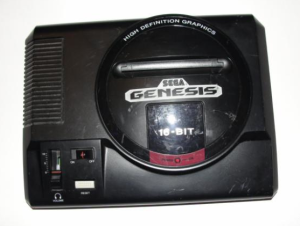Today, we’re looking at three classic 8/16-bit games that have two things in common. One, they all feature awesome robots and two, they’re highly underappreciated. These games also feature some effects and gameplay ideas that were far ahead of their time. In fact, one of these games is part of the legacy from an amazing studio that’s just closed down. If you’re looking for some new ROMs to try out, these three are highly recommended.
Metal Storm
NES – Irem 1991

Metal Storm is a high-quality platformmer game in the vein of Mega Man or Metroid but with awesome twist; your mech can reverse his gravity and fly up to the roof at any moment. Some of the baddies can do it too, which keeps things interesting. The level design is brilliant: Can’t pass that huge pit? Why not reverse gravity and walk across the ceiling? You can even sort of hover temporarily by continually switching the gravity. You’ll have to master switching orientation quickly in the later stages to latch onto tiny platforms or even bosses in some instances.
Metal Storm is the earliest console game (and only NES one) I’ve ever seen that has parallax scrolling. The programmers constantly redrew the background to create that effect that was much more common in 16-bit systems. It really gave the world a level of depth.
Oh yeah, this game also has THE MOST INSANE BOSS FIGHT EVER. Just click the link and watch the video. I don’t think I ever sweated so much during a gaming session as when playing it on the actual console. Every boss in the game is brilliantly designed. The gravity-switch is not just a gimmick, it’s the very foundation of the gameplay.
Herzog Zwei
Sega Master / Genesis – Technosoft 1989

Dune II is often credited as the first RTS game, but a little Mega Drive cart called Herzog Zwei beat them to the genre by a full two years! This is possibly one of the best 2-player games on the Genesis. The split screen interface is at times annoying and gives away what’s going on, but there were NO GAMES like this at that time. At least play this to pay respect to the forerunner that gave us things like Starcraft.
This game is kind of a micromanagement nightmare at its worse but it’s great strategy and exciting action at its best. You can spawn up to 50 units per player and launch all sorts of attacks against your robot opponent’s base. The AI is not so great, so play this one with a friend.
Metal Warriors
SNES – LucasArts 1995

Imagine taking the Megaman X or Metroid game engine and making it a 2-player hunt fest. Or if you prefer, a 1 player awesome mission-driven game. That’s what this very anime-influenced game brings to the table. The 1-player mode is great, you drive around in big bulky mechs, taking out other big bulky mechs. Occasionally, you have to get out and go hack a computer as a tiny vulnerable human, and hope someone doesn’t steal your vehicle while you’re out. With 6 different Mechs to chose from and the ability – and often necessity – to switch them three or four times per level, the gameplay is truly dynamic.
The thing that stands out the most in this game is that no one Mech suit can destroy the others easily. There is no ‘best suit’. Each suit stands a fair fight against another suit in the hands of an experienced player who knows how to use them. I always loved the lumbering Prometheus. This dude has NO JUMP, that’s right, he cannot leave the ground, but he has insane armor, attacks that can deal serious damage across the entire map, and he can even build bridges to cross gaps or seal off portions of the board. You have to carefully select which suit you’ll use in the Mission mode, since there are lots of suits laying around, often just as a tease to get you to trade. The missions often depend on having the right suit at the right moment and knowing when to ditch your smoking wreck as well. The one-player mode is full of challenges and interesting twists that keep you excited about the otherwise mundane story.

However, all this pales in comparison to the funnest two-player mode on any SNES game in existence. In split-screen mode, you go out to find and destroy your friend’s mech. It’s a great game of cat and mouse, especially when one of you loses your suit and has to hunt down a spare while being chased by a massive mech. With tons of powerups and suits that fly, cloak, climb walls, sonic-the-hedgehog-dash, build bridges, swing chains and uh..sort..of..jet-ice-skate along (?), it’s tons of fun with the most replay imaginable.
Why did none of these games get the attention they deserve? I really can’t say. Bad timing, poor advertising, saturated market? The good thing is, these games age quite well. Try them out today.
 Beatscribe is a full time indie composer, musician and writer. By day he creates soundtracks for various mobile gaming companies, by night creates megaman-inspired chiptunes, in the afternoons he drinks tea. Check out his latest releases, tutorials and retro ruminations at www.beatscribe.com.
Beatscribe is a full time indie composer, musician and writer. By day he creates soundtracks for various mobile gaming companies, by night creates megaman-inspired chiptunes, in the afternoons he drinks tea. Check out his latest releases, tutorials and retro ruminations at www.beatscribe.com.




